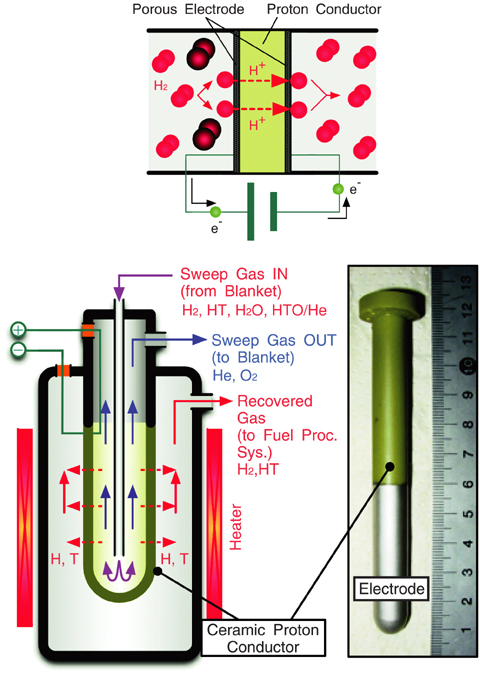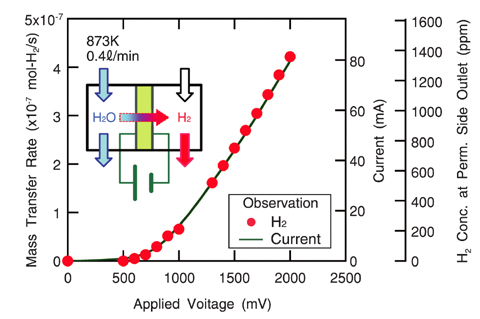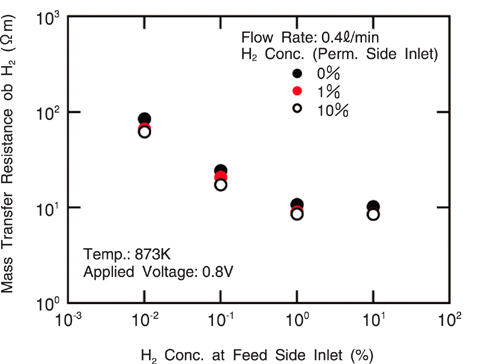
Fig.3-19 The principle of the hydrogen pump (upper), and the schematic of a hydrogen pump using proton conductor ceramic membrane in test tube shape (down)

Fig.3-20 Water decomposition and extraction of hydrogen

Fig.3-21 Correlation of the mass transfer resistance of hydrogen through the membrane and hydrogen gas concentration
A fusion reactor is a system extracting the energy of the nuclear fusion reaction between deuterium and tritium. However, tritium is scarce in nature. Therefore, in a fusion reactor, tritium is made by the nuclear reaction between the neutron and the lithium in the blanket. Tritium bred in the blanket is purged out by helium (He) sweep gas, and is separated from He at a recovery system. To operate the fusion reactor, we have to make more tritium than is burned up in the reactor.
Possible tritium recovery method includes metallic film permeation and use of hydrogen storing alloy. However, in a fusion DEMO reactor, the temperature and flow rate of the sweep gas are expected to increase greatly. A more effective method is needed. In response, we directed our attention to the hydrogen pump an apparatus using the principle of the fuel cell in reverse. When electric potential is applied to the proton conductor (fuel cell), hydrogen can move inversely against a hydrogen concentration gradient and can be extracted selectively (Fig.3-19).
We selected a ceramic proton conductor since we would use it at a high temperature. The proton current which can be passed through the ceramic conductor is quite small in comparison with that of a polymer electrolyte, but we could extract hydrogen from water vapor using the ceramic conductor (Fig.3-20). In addition, we found out that the rate of decrease of the mass transfer resistance is unchanged with the increase of hydrogen gas concentration (Fig.3-21).
We thus established the fundamental feasibility of the hydrogen pump. Hereafter, our effort shifts to the practical application of the hydrogen pump, requiring such accomplishments as the enhancement of pumping performance.